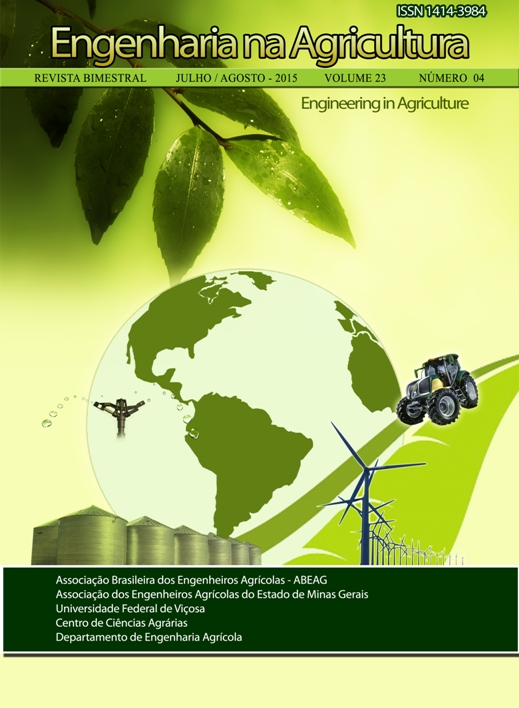EFEITO DE DIFERENTES NÍVEIS DE ÁGUA NO SOLO NA PRODUÇÃO DO RABANETE CULTIVADO EM DOIS TIPOS DE AMBIENTES PROTEGIDOS - DOI: 10.13083/1414-3984/reveng.v23n4p346-354
DOI:
https://doi.org/10.13083/reveng.v23i4.577Palavras-chave:
matéria fresca, área foliar, Raphanus sativusResumo
A cultura do rabanete é sensível às flutuações de umidade no solo, no entanto, são raros os trabalho sobre o manejo da irrigação e o efeito do déficit hídrico. Assim, este trabalho foi conduzido com o objetivo de avaliar o efeito da irrigação na cultura do rabanete cultivado em ambiente protegido. O estudo foi realizado na área experimental do Departamento de Engenharia da UFLA em duas estufas sendo uma coberta com polietileno transparente (convencional) e a outra, também coberta com polietileno foi colocado nas laterais e ao nível do pé direito uma malha vermelha (modificado). A cultura foi irrigada por gotejamento. Utilizou-se um delineamento experimental inteiramente casualizado (DIC), com quatro níveis de tensão de água no solo (15, 30, 45 e 60 kPa) e quatro repetições, em um total de 16 parcelas experimentais. As variáveis analisadas foram: diâmetro, comprimento e massa fresca do bulbo com raiz e sem a raiz, área foliar, comprimento da raiz, massa seca da planta, massa seca do bulbo. Os resultados indicam que nos dois ambientes os tratamentos de irrigação não influenciaram nas variáveis analisadas. No ambiente com malha vermelha os valores tendem a serem menores, exceto a área foliar.Downloads
Downloads
Publicado
Como Citar
Edição
Seção
Licença
Autores que publicam nesta revista concordam com os seguintes termos:
O(s) autor(es) autoriza(m) a publicação do texto na da revista;
O(s) autor(es) garantem que a contribuição é original e inédita e que não está em processo de avaliação em outra(s) revista(s);
A revista não se responsabiliza pelas opiniões, ideias e conceitos emitidos nos textos, por serem de inteira responsabilidade de seu(s) autor(es);
É reservado aos editores o direito de proceder a ajustes textuais e de adequação às normas da publicação.
A partir da submissão, o autor estará cedendo integralmente seus direitos patrimoniais da obra à publicação, permanecendo detentor de seus direitos morais (autoria e identificação na obra) e de acordo com a Licença Creative Commons, CC BY-NC.








 Esta obra está licenciada com uma Licença
Esta obra está licenciada com uma Licença 